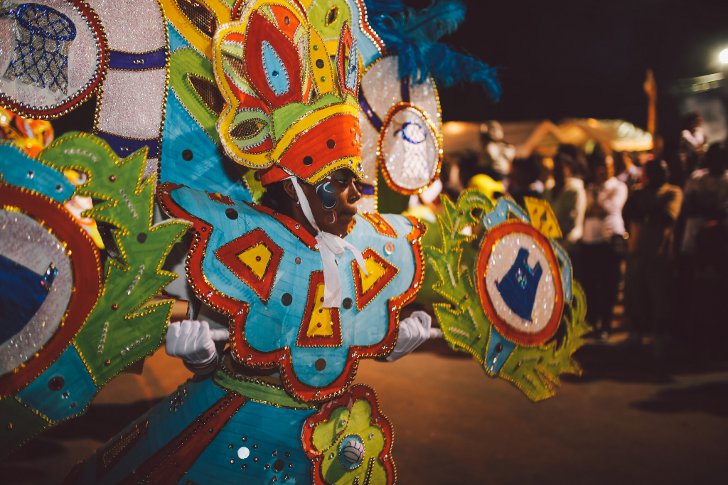The history of the Junkanoo festival dates back to the colonial times. Centuries ago, slaves working on plantations in the Bahamas were granted three days days off work around Christmas so they could spend the holiday with their families. They celebrated with music, dance and costumes. The tradition continued after the abolition of slavery, and Junkanoo evolved from a spontaneous celebration to an organized parade with themed music, elaborate costumes and even an official competition.
The origin of the word junkanoo is unclear. Theories include that it is derived from the French phrase gens inconnus, which translates as “unknown people”, as revelers wear masks that make them hard to recognize. Another theory claims that the event was named after John Canoe (also spelled John Kenu), a folk hero of Akan origin. Akan slaves in the Caribbean held a festival in his honor, which inspired the present-day Junkanoo parade.
Jankanoo is similar to the Fancy Dress Festival held on Christmas in Ghana. It features revelers in elaborate costumes dancing to the sound of cowbells, goatskin drums, horns and whistles. Dance groups begin to rehearse their routines long before the parade to ensure that everything’s perfect.
Jankanoo parades are held throughout the archipelago, but the most spectacular event takes place in downtown Nassau. Thousands of people dance through the streets from around 2 am to 10 am, cheered on by numerous spectators. At the end of the procession, judges award prizes for the best costume, best music and best group presentation.
Of course, it’s impossible to imagine a Bahamian celebration without Caribbean cuisine. Traditional dishes cooked for the occasion include grilled chicken, rice and ham, and baked goods soaked with rum.

Photo: The Island School




